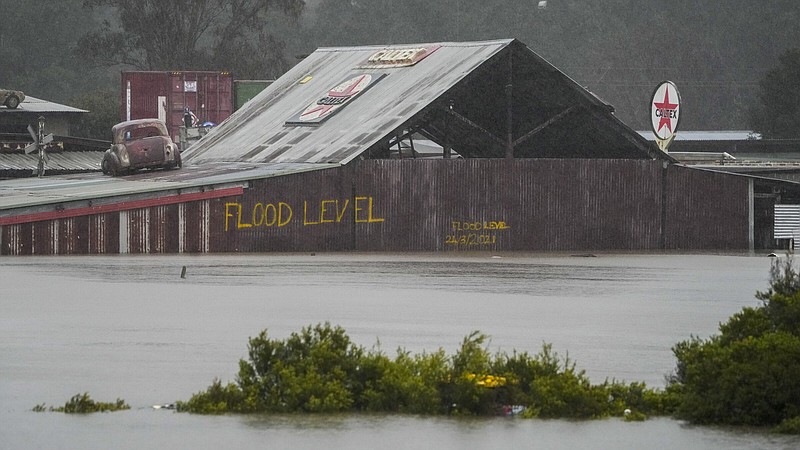SYDNEY -- Hundreds of homes have been inundated in and around Australia's largest city in a flood emergency that was impacting 50,000 people, officials said Monday.
Emergency response teams made 100 rescues overnight of people trapped in cars on flooded roads or in inundated homes in the Sydney area, State Emergency Service manager Ashley Sullivan said.
Days of torrential rain caused dams to overflow and waterways to break their banks, bringing a new flood emergency to parts of the city of 5 million people.
The New South Wales state government declared a disaster across 23 local government areas overnight, activating federal government financial assistance for flood victims.
Evacuation orders and warnings impacted 50,000 people, up from 32,000 on Monday, New South Wales Premier Dominic Perrottet said.
"This event is far from over. Please don't be complacent, wherever you are. ... There is still substantial risk for flash flooding across our state," Perrottet said.
Parts of southern Sydney had been lashed by nearly 8 inches of rain in 24 hours, more than 17% of the city's annual average, Bureau of Meteorology meteorologist Jonathan How said.
Severe weather warnings of heavy rain remained today in place across Sydney's eastern suburbs. The warnings also extended north of Sydney along the coast and into the Hunter Valley.
"There was plenty of rain fall overnight. ... So you've got to take many days, if not a week, to start to see these floodwaters start to recede," How added.
The worst flooding was along the Hawkesbury-Nepean rivers system along Sydney's northern and western fringes. The bureau Monday afternoon reported major flooding at the Nepean communities of Menangle and Wallacia on Sydney's southwest fringe.
Major flooding also occurred on the Hawkesbury at North Richmond on Sydney's northwest edge. The Hawkesbury communities of Windsor and Lower Portland were expected to be flooded Monday afternoon and Wisemans Ferry today, a bureau statement said.
State Emergency Services Commissioner Carlene York said strong winds had toppled trees, damaging roofs and blocking roads. She advised against unnecessary travel.
The wild weather and mountainous seas along the New South Wales coast thwarted plans to tow a stricken cargo ship with 21 crew members to the safety of open sea.
The ship lost power after leaving port in Wollongong, south of Sydney, on Monday morning and risked being grounded by 26-foot swells and winds blowing at 34 mph against cliffs.
An attempt to tow the ship with tugboats into open ocean ended when a towline snapped in an 36-foot swell late Monday, Port Authority chief executive Philip Holliday said.
The ship was maintaining its position farther from the coast than it had been with two anchors and the help of two tugboats. The new plan was to tow the ship to Sydney when weather and sea conditions calmed as early as Wednesday, Holliday said. The original plan had been for the ship's crew to repair their engine at sea.
Repeated flooding was taking a toll on members of a riverside community southwest of Sydney, said Theresa Fedeli, mayor of Camden -- where homes and businesses were inundated by the Nepean River over Sunday night.
"I just keep on saying ... 'We've got to be strong, we will get through this.' But you know deep down it's really hitting home hard to a lot of people," Fedeli said.
Perrottet said government and communities needed to adapt to major flooding becoming more common across Australia's most populous state.
"To see what we're seeing right across Sydney, there's no doubt these events are becoming more common. And governments need to adjust and make sure that we respond to the changing environment that we find ourselves in," Perrottet said.
